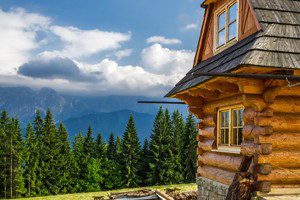- Yellowstone National Park, surrounded by Montana, Wyoming and Idaho, offers visitors opportunities of a lifetime:
- awe-inspiring geothermal features, including 300 active geysers
- rolling plains dotted with bison, elk, deer mountain lions and bears
- unique camping experiences or an opportunity to stay in a historic hotel or cabins
- extensive hiking trails, sea kayaking adventures and plenty of fishing spots
Yellowstone National Park is the veritable grandfather of the United States National Park system. In March of 1872, Yellowstone's 2.2 million acres became the very first area to earn official designation as a "national park," marking the beginning of a new movement in the United States dedicated to recreational tourism.
Geothermal Activity
Aside from Yellowstone's standout geographical features like Yellowstone Falls and historical structures like the Old Faithful Lodge, Yellowstone houses more than half of the world's naturally occurring hydrothermal land features. Of the 300 active geysers and 10,000 geothermic features in Yellowstone National Park, there is plenty to see, from Mammoth Hot Springs in the northwest corner of the park, to the Fountain Paint Pots on Firehole Lake Drive and the beautiful Morning Glory Pool, both conveniently located a short drive from Old Faithful.
Points of Interest
Many visitors enjoy Yellowstone's extensive campgrounds that offer both traditional campsites and RV hookups. A stay in one of Yellowstone's historic hotels allows your family to experience the history and comfort of the park from within! If a trip around the entire park does not seem feasible, pick just one of the six main areas of interest from:
- Mammoth Hot Springs
- Old Faithful
- Grant Village and West Thumb
- Yellowstone Lake, Bridge Bay Marina, and Fishing Bridge
- Yellowstone's Grand Canyon
- Roosevelt and Tower
Wildlife Viewing
Yellowstone offers some of the best and most diverse wildlife viewing areas in the United States. From curious black bears to majestic elk and moose to the nimble coyote, the Yellowstone ecosystem is a thriving habitat for an impressive array of wildlife creatures. You might see bison, mountain lions, bighorn sheep, and even an imposing grizzly bear on any given day, but anglers have an even bigger treat waiting for them. While the Yellowstone cutthroat trout is an angler's dream, rainbow, lake and brown trout flourish here as well. Come to Yellowstone and enjoy the great abundance that Mother Nature has to offer!
Fees
Entrance fees are collected upon entry to Yellowstone National Park:
- Single Vehicle (valid for 7 days): $30
- Individual (bicycle or foot): $15
- Yellowstone and Grand Teton National Parks 7-day pass: $50
- Interagency Annual Pass (for most National Parks throughout the country): $80
Seasons
Yellowstone National Park is open to visitors year-round. But winter snow alters the method of accessing the park. From Spring until Fall, you can access all areas of the park in a wheeled vehicle. Come winter, all roads close to vehicle traffic save one: the North Entrance at Gardiner to the Northeast Entrance at Cooke City remains open. Over snow access (via snowmobile, snowcoach, and cross country ski) is a popular option for touring the park during the winter months. Visitors must be part of an organized tour to access the park via snowmobile or snowcoach.








